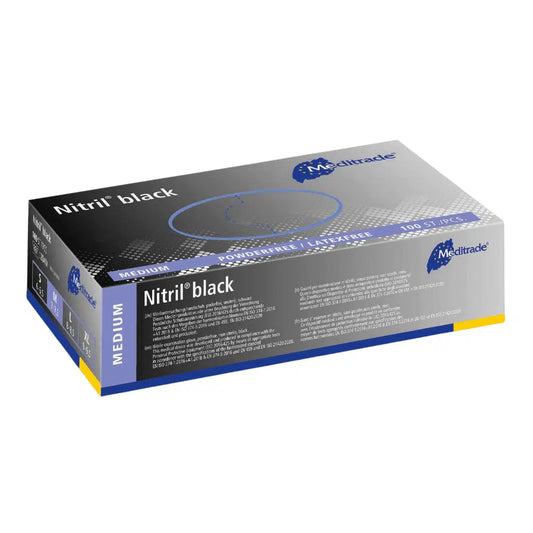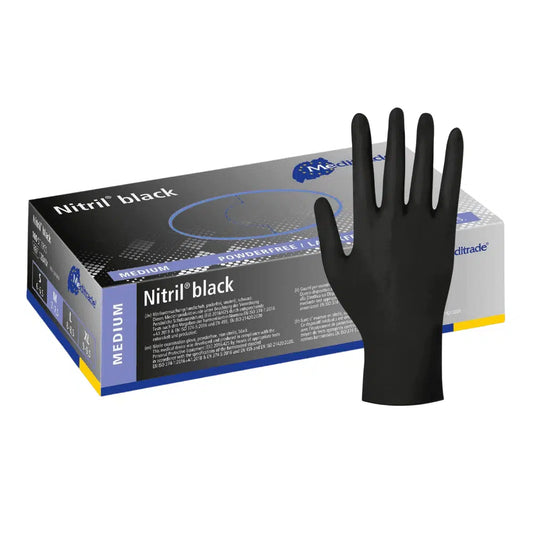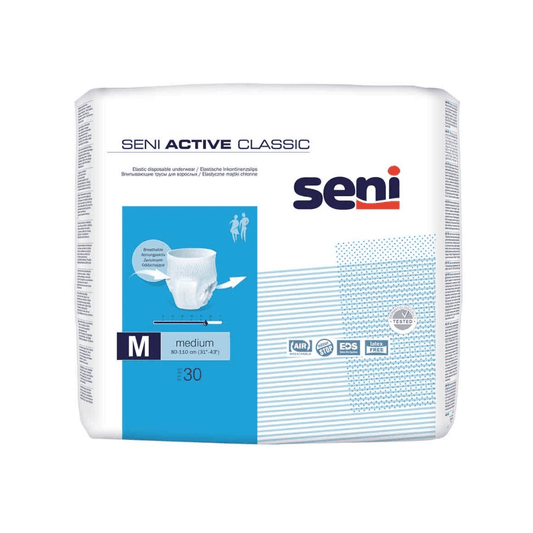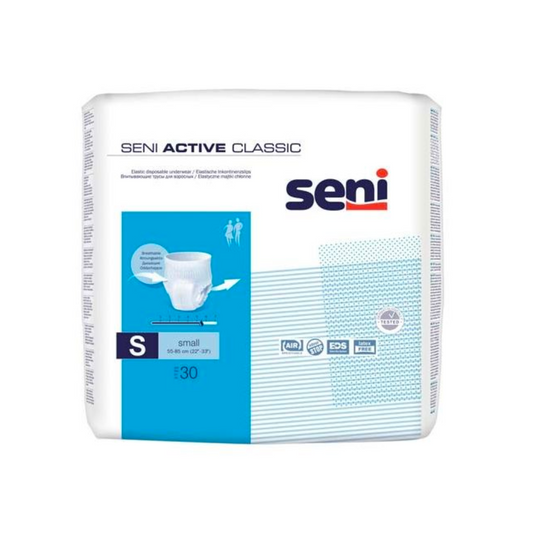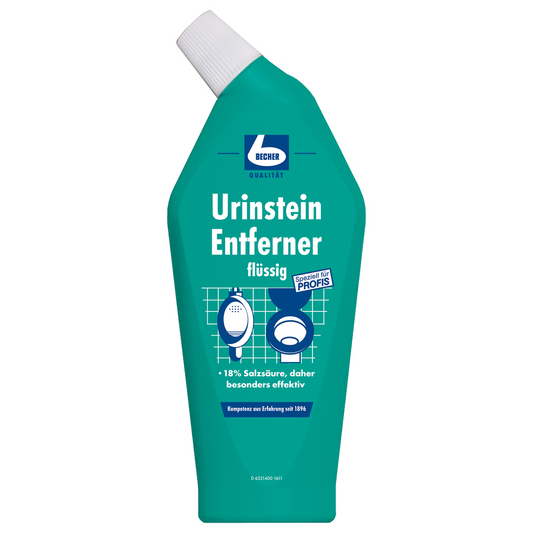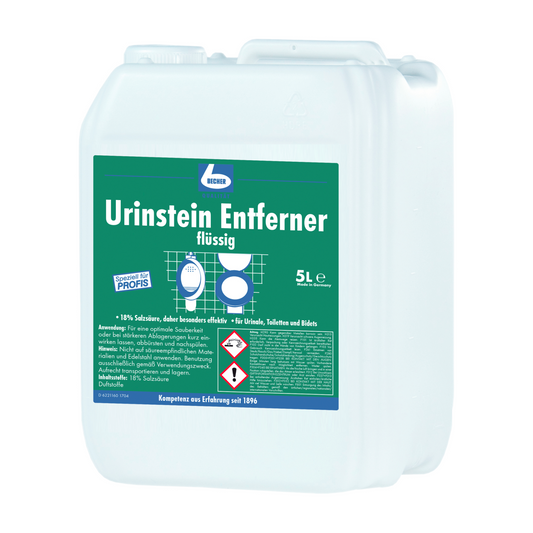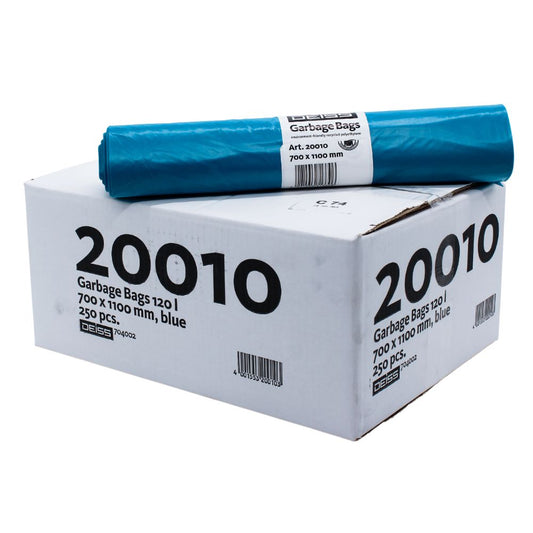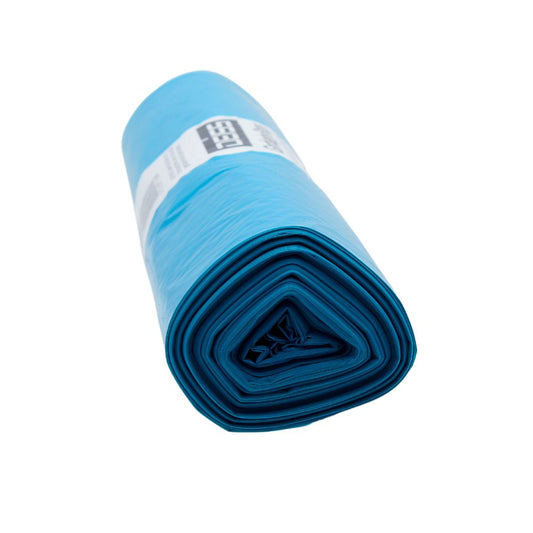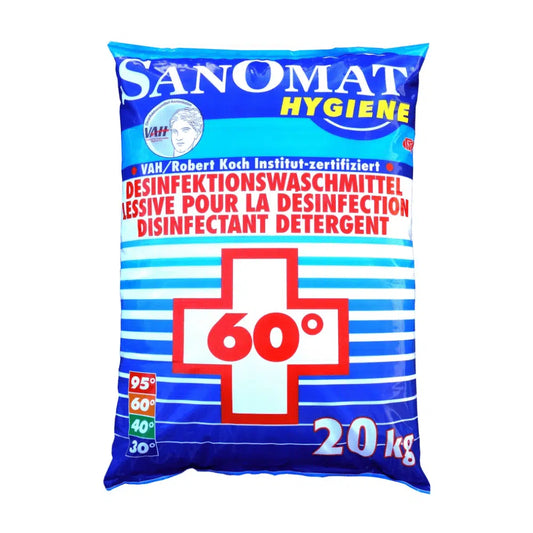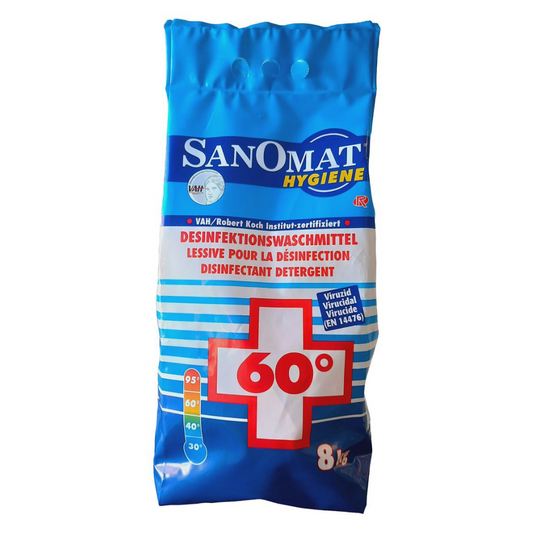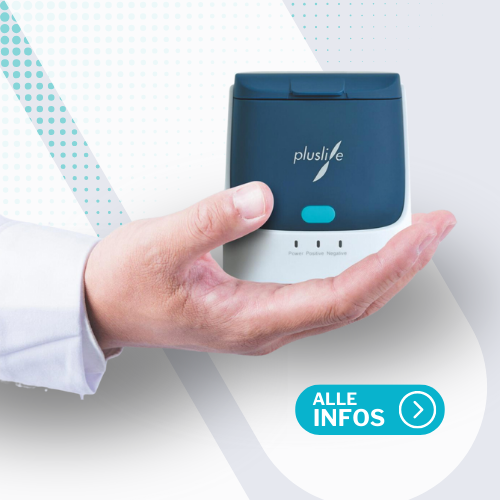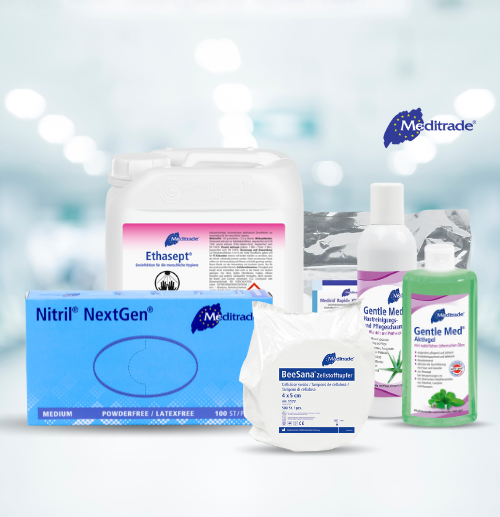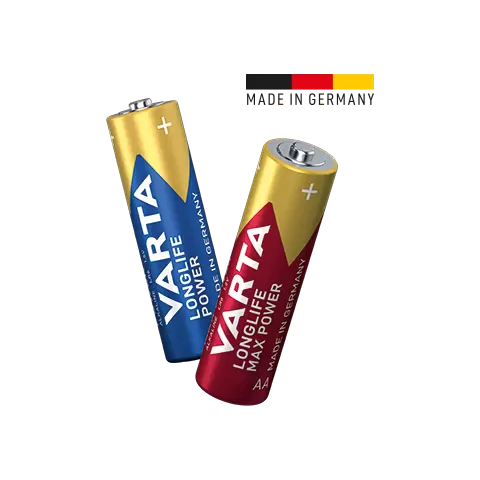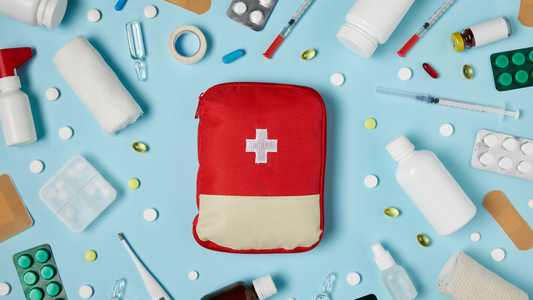
European standards for disposable gloves – EN 374, 455 and EN ISO 21420:2019
European standards for disposable gloves
Disposable gloves are a Main component of protective equipment in various professional sectors where hygiene and patient protection play a major role. It is particularly important to wear disposable gloves in clinics, practices or in the food industry. When you wear disposable gloves, you not only protect the patients or customers but also yourself. Since great importance is placed on infection protection, all disposable gloves on the market must undergo special test procedures in order to be sold as medical examination gloves, for example. After the various test runs for disposable gloves, they receive a label which is also required by law.
Below you will get insights about the necessary labels in your industry , the different test procedures and what each label says.
What markings are there?
EN 455 - European standard in medical field
To mark the European standard 455 In order to receive approval, the disposable gloves must undergo various tests. As soon as the disposable gloves have successfully passed the test, they can be used medical area be applied. Disposable gloves without EN 455 are not approved for the medical sector as this is about protecting patients and users from contamination.
EN 455 can be divided into four different areas
- EN 455-1: tightness
- EN 455-2: Physical properties
- EN 455-3: Biological assessment
- EN 455-4: Durability
EN455-1 tightness of disposable gloves
To protect against infection, it is very important that the disposable gloves are impermeable to liquids and other secretions . This not only protects the user of the disposable gloves but also the patient. The tightness of the disposable gloves is tested as follows: First, the gloves are hung up one after the other and filled with water until the material is taut. Furthermore, the gloves are inflated with air, held in the water and then it is observed whether air bubbles rise. These test runs check whether there are holes in the gloves . If this is the case, the faulty gloves will be sorted out immediately. The number of gloves sorted out is noted and evaluated. The result of this evaluation is given as the AQL value . You can find out more about the AQL value in the following section of this article.
Since the disposable gloves used are no longer allowed to be sold, the leak test is only carried out Randomly proceeded. The number of disposable gloves to be tested is specified for each safety level.
CE Cat. I Protective clothing for minimal risks
CE Cat. II Medium risk protective clothing
CE Cat. III High risk protective clothing
EN455-2 Physical Properties
To check the physical properties, we test how tear-resistant and stable the disposable gloves are. The European standard 455-2 also specifies the required sizes and dimensions of disposable gloves. Disposable gloves that do not meet the exact specifications of EN455-2 may not be used in the operating room.
A distinction is also made between the applicable requirements surgical gloves and disposable gloves for patient care or examinations. EN 455-2 also specifies the dimensions an examination glove must have.
EN455-3 Biological assessment
When it comes to examination gloves, a distinction is made between nitrile gloves, vinyl gloves, latex gloves and TPE gloves . It often happens that medical personnel are allergic to latex react. As an alternative to latex gloves , vinyl gloves or nitrile gloves are used. To protect users, the packaging of disposable gloves must indicate whether latex is contained in accordance with EN 455-3.
Powdered gloves provide a better grip, but the use of Non-powdered disposable gloves are recommended , as many nursing staff or doctors are usually still unknowingly allergic to powder. Therefore, in addition to the latex content, the powdering of a glove must also be marked.
According to the EN455-3, the powder content must not exceed a maximum of 2 mg powder . Disposable gloves that are certified with EN455-3 are also allowed Don't be powdered with talcum powder . More detailed information about the chemicals used, endotoxins, powders and the soluble proteins must be provided by the manufacturer in the information available to everyone data sheets be specified.
EN455-4 durability of disposable gloves
Disposable gloves cannot go “bad” , which is what one would probably associate with the term durability. However, the material from which the disposable glove is made can brittle become. How the gloves are stored also plays a big role in their durability. The manufacturer is therefore obliged to label storage instructions on the packaging.
There are two methods when testing the durability of disposable gloves.
- Acceleration of durability : The disposable gloves are heated in a special oven to simulate the aging process. You will then undergo some tests. If you pass this successfully, you will be given a provisional expiry date of three years Mistake.
- Testing in real time : Typically, the maximum shelf life for disposable gloves is five years. In order for a disposable glove to have a shelf life of up to five years, it must be used within a period of undergone various tests several times over five years . In the five years will be the same tests as for EN455-1 and -2 applied.
EN374 - European standard against permeation and penetration
To ensure that disposable gloves in some industries, such as in laboratories or when cleaning , also have to be resistant to chemicals , there is EN ISO 374:2016+A1:218 or EN 374 for short . The disposable gloves are tested for resistance to chemicals and microorganisms using various tests. The disposable glove is intended to protect the user from irreversible damage to health, so before using disposable gloves in the laboratory it is extremely important to check the packaging of the disposable gloves or whether it has the labels.
Currently EN 374 is in five different levels divided, with each level providing information about the area of application being tested.
-
EN ISO 374-1:2016+A1:2018: Chemical Risk Performance Requirements
-
EN 374-2:2019+A1:2018: Penetration resistance
-
EN 16523-1:2015+A1:2018 (formerly EN 374-3:2003): Determination of the resistance of materials to permeation of chemicals and liquid chemicals under conditions of continuous contact
-
EN 374-4:2019+A1:2018: Resistance to chemical degradation
-
EN ISO 374-5:2016+A1:2018: Protection against bacteria, fungi and viruses
EN ISO 374-1:2016+A1:2018: Performance requirement for chemical risks
The pictograms shown above must be marked on EN374 certified disposable gloves. The standard refers solely to protection against chemicals.
A distinction is made here between Types A, B and C.
Type A: Protection against chemical breakthrough 6 Test chemicals for at least 30 minutes
Type B: Protection against chemical breakthrough 3 Test chemicals for at least 30 minutes
Type C: Protection against chemical breakthrough at least one of the test chemicals for at least 10 minutes
The Test chemicals Which disposable gloves were used for the test are always stated by the manufacturer on the packaging of the gloves. The Code letters are always below the pictogram under the respective type.
In the table you will find the old and new test chemicals with the respective code letters.
EN 274-2:2019+A1:2018: Penetration resistance
To determine the penetration resistance, an air leak test and a water leak test are carried out. The disposable gloves are filled with either water or air until the material becomes taut. The disposable gloves filled with water are checked to see if water is leaking out. The disposable glove filled with air is held in water and it is then observed whether air bubbles appear or not. If air bubbles appear, this indicates that the disposable glove is not tight.
EN 16523-1:2015+A1:2018 (formerly EN 374-3:2003): Resistance of materials to chemical permeation
Permeation describes this Penetration of liquid or gaseous chemicals through a barrier. The breakthrough time indicates how long it takes for a chemical to get through the protective layer of a disposable glove to the user's skin. Disposable gloves can be provided with different protection classes. The following applies: The higher the protection class, the better the protection.
EN 374-4:2019+A1:2018: Resistance to degradation by chemicals
The material from which disposable gloves are made can change due to the influence of chemicals. The change in material means, for example, decreasing elasticity or tear resistance . The fourth part of standard 374 is intended to provide information about whether and for how long a disposable glove that has come into contact with any chemical can still be used . The standard is important for you if you have to work with chemicals on a daily basis, as it is then important to know when to change your gloves.
The test procedure for EN 374-4:2019+A1:2018 certification is as follows:
The disposable glove will one of the 18 Test chemicals (already listed above) for one hour exposed. It is then tested whether and how Puncture resistance of the glove has changed.
EN ISO 374-5:2016+A1:2018: Protection against bacteria, fungi and viruses
EN ISO 374-5:2016+A1:2018 has only been around since 2016; before that, protection against bacteria, fungi and viruses was included in EN374-1.
The test procedures for the fifth part of EN375 are similar to those for EN374-2. It will also be one Air leak test and a Water leak testing carried out. However, there is also a test procedure in which the disposable glove is one Exposed to contaminant fluid becomes. The contamination liquid is with a simulated virus that can cause illness in a person.
If the glove passes the test successfully, it can be marked with EN ISO 374-5:2016+A1:2018 and is proven to protect against bacteria, fungi and viruses.
EN420 becomes EN ISO21420:2019
EN ISO 21420:2019 is used in combination with other European standards and ensures the accuracy of the data provided by the manufacturer.
The standard specifies that disposable gloves protect the user when worn as prescribed by the manufacturer. In addition, the gloves must not harm the user's health or cause allergic reactions if they comply with the manufacturer's instructions. A detailed list of all materials used in the manufacture of the glove must be provided upon consumer request.
